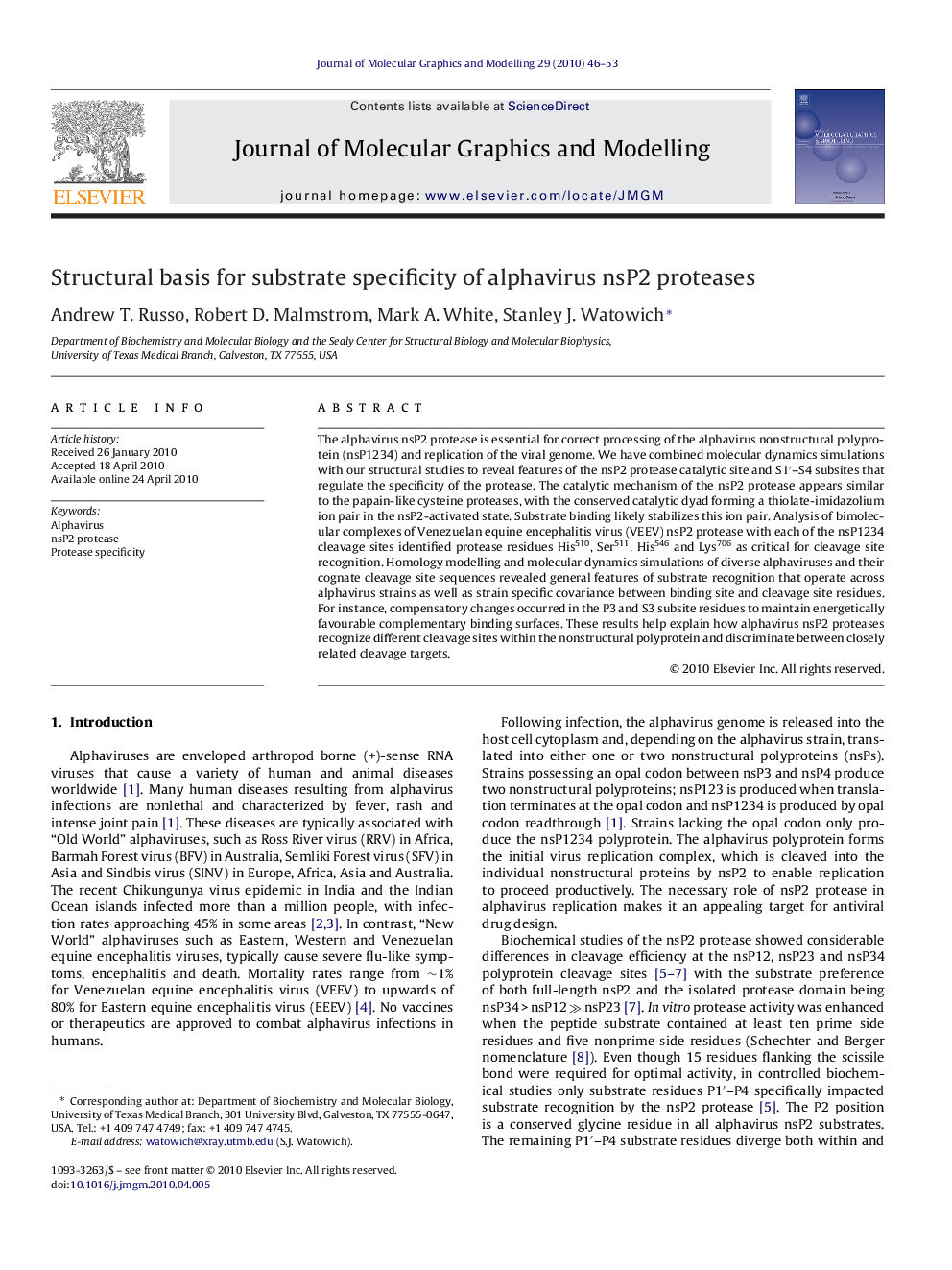| Article ID | Journal | Published Year | Pages | File Type |
|---|---|---|---|---|
| 444503 | Journal of Molecular Graphics and Modelling | 2010 | 8 Pages |
The alphavirus nsP2 protease is essential for correct processing of the alphavirus nonstructural polyprotein (nsP1234) and replication of the viral genome. We have combined molecular dynamics simulations with our structural studies to reveal features of the nsP2 protease catalytic site and S1′–S4 subsites that regulate the specificity of the protease. The catalytic mechanism of the nsP2 protease appears similar to the papain-like cysteine proteases, with the conserved catalytic dyad forming a thiolate-imidazolium ion pair in the nsP2-activated state. Substrate binding likely stabilizes this ion pair. Analysis of bimolecular complexes of Venezuelan equine encephalitis virus (VEEV) nsP2 protease with each of the nsP1234 cleavage sites identified protease residues His510, Ser511, His546 and Lys706 as critical for cleavage site recognition. Homology modelling and molecular dynamics simulations of diverse alphaviruses and their cognate cleavage site sequences revealed general features of substrate recognition that operate across alphavirus strains as well as strain specific covariance between binding site and cleavage site residues. For instance, compensatory changes occurred in the P3 and S3 subsite residues to maintain energetically favourable complementary binding surfaces. These results help explain how alphavirus nsP2 proteases recognize different cleavage sites within the nonstructural polyprotein and discriminate between closely related cleavage targets.
